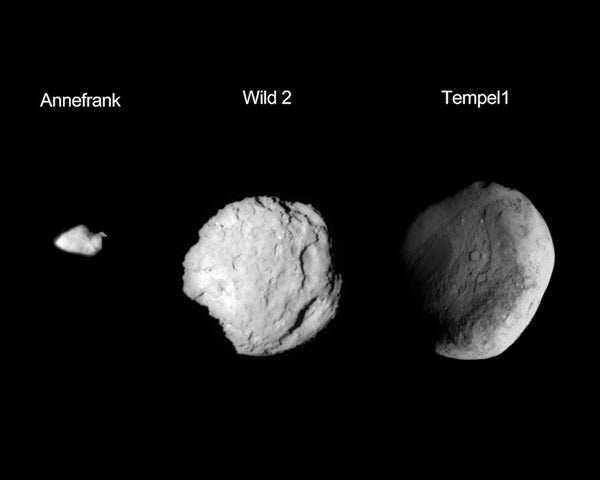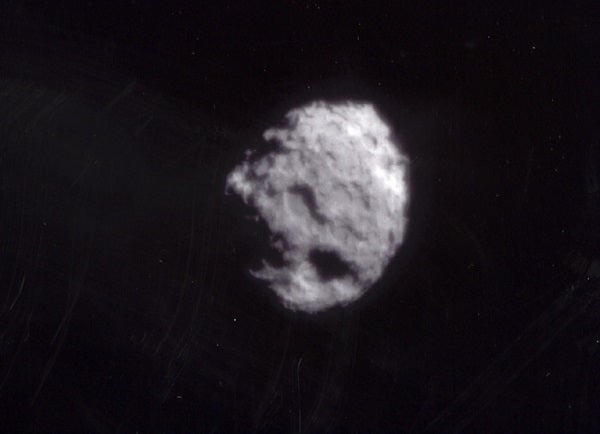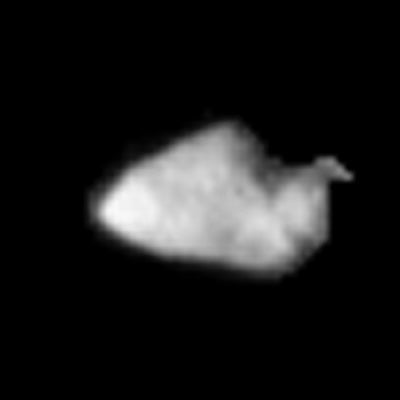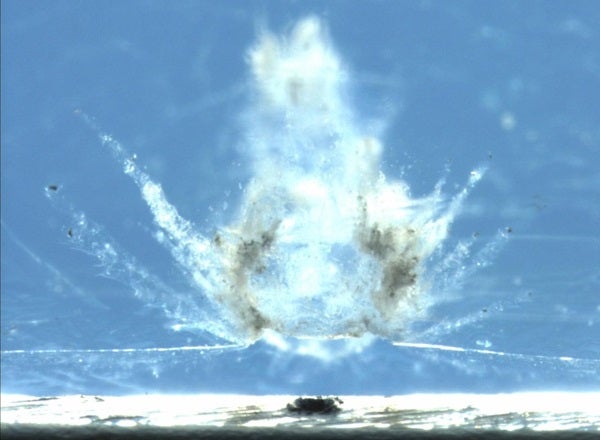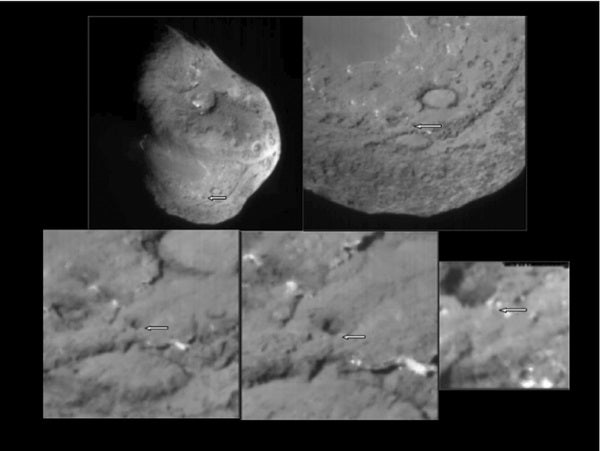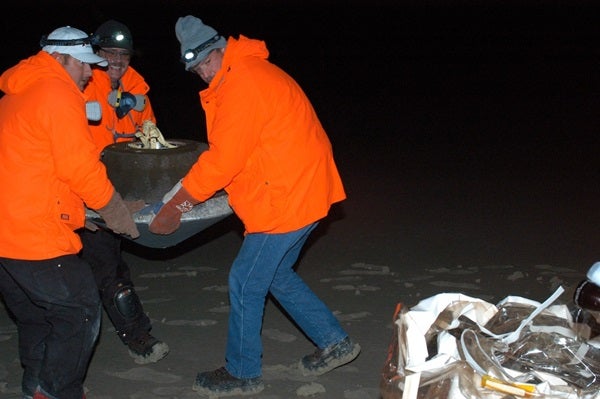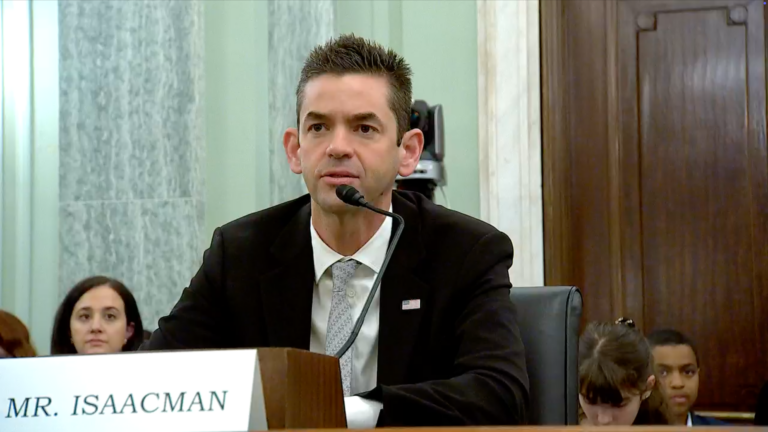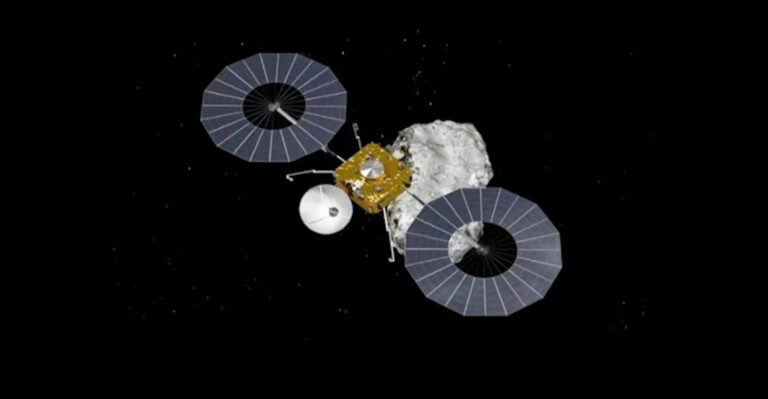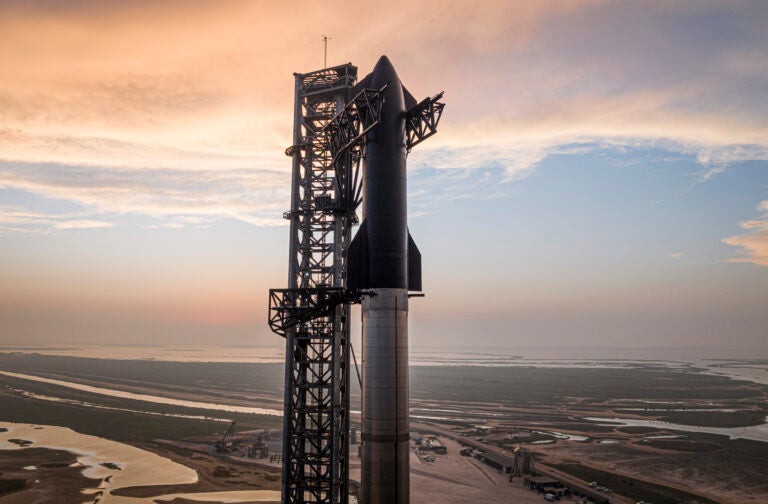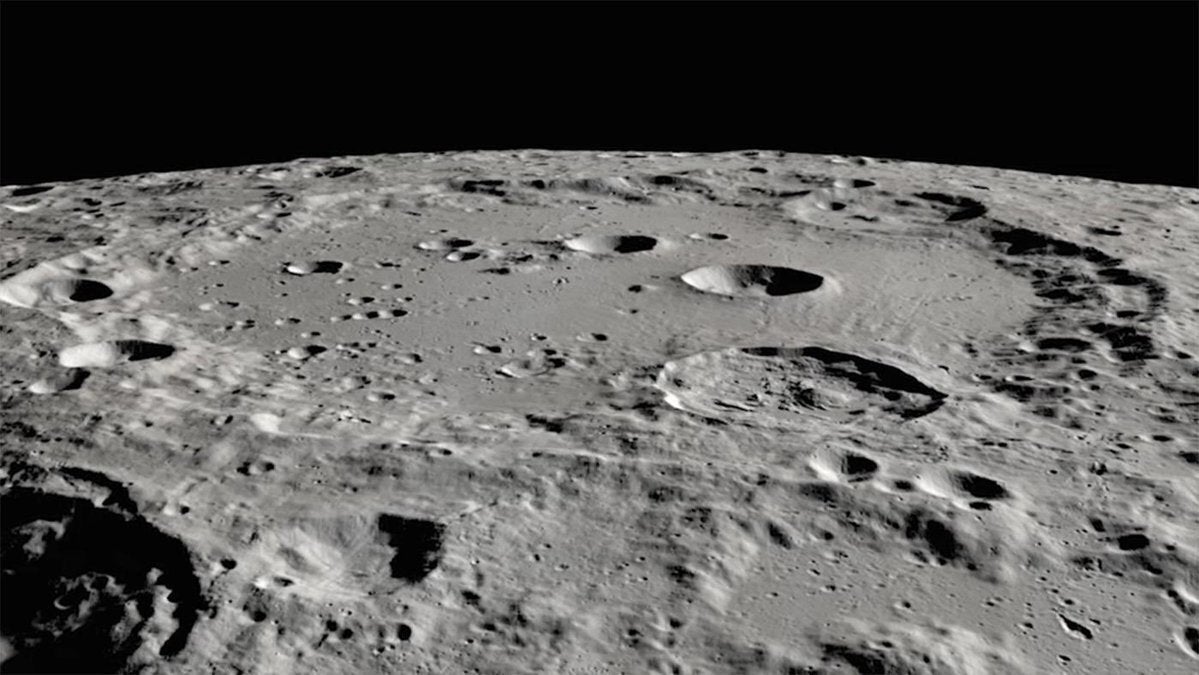On Feb. 7, 1999, a Delta II rocket lifted off from Cape Canaveral, in Florida. Aboard the rocket was NASA’s unmanned Stardust probe. Stardust’s mission was to rendezvous with comet Wild 2.
Stardust was designed to be the first spacecraft to return cometary samples from beyond the Moon’s orbit. The craft would pass through the comet’s coma — the hazy envelope of ice and dust the object develops as it warms — and collect that would later be returned to scientists for study in a special sample return capsule.
Along the way, Stardust also visited asteroid Annefrank and a second comet, Tempel 1, before intentionally having its thrusters fired until its fuel became exhausted. Its samples were returned to Earth on Jan. 15, 2006. These particles were thought to be older than our solar system and contain remnants of the materials that built the solar system, but their true nature altered scientists understanding of how most of the rocky matter formed.
I recently had the opportunity to speak with Dr. Donald Brownlee, the principal investigator for Stardust, in a Q&A session to look back on this groundbreaking mission.
[Note: This interview has been edited for length and clarity.]
DA: Tell us about the inception of the Stardust mission: how was it conceived and what was your role in mission planning?
Brownlee: Before Halley’s comet made its 1986 return, there was great excitement among American space scientists expecting to send a mission to meet it. Although Europe sent a probe, the Soviets sent two and Japan sent two, the US was not able to muster any attempt.
Peter [Tsou, of the Jet Propulsion Laboratory (JPL)] and I thought that the idea of collecting high velocity particles in space and returning them to Earth was very important and we began a vigorous development of capture processes. [Peter] pushed the idea of high speed “intact capture” where whole particles were captured without melting or vaporizing. Most people, including me, thought that this was impossible. After trying a number of schemes, the breakthrough was the use of silica aerogel an ultra-microporous transparent silica glass that sometimes is called frozen smoke. It is a porous network of silicon dioxide grains only about 3 nanometers in size. It is a very unusual material that is made of glass but is only a little denser than air. Tests showed that solid materials could be captured at 3.7 miles per second [6 kilometers per second]; they enter the glass and slow to a stop, making a hollow track that is often hundreds of times longer than the particle size.
Over the years we proposed several missions… but none were selected for funding. When the opportunity for the fourth NASA Discovery mission [a program to fund investigator-initiated planetary probes] was announced, we decided to propose [the Stardust mission]. During development of mission concepts, Chen-Wan Yen at JPL made an amazing discovery: with the type of trajectory and spacecraft needed for our mission, we could fly past a comet, collect dust on a flyby, and return to Earth. She found that we could go to comet Wild 2 and be the first NASA sample return [mission] since Apollo [17] in 1972. We changed plans so that the mission would include both a comet flyby dust collection as well as the collection of interstellar dust. We were selected out of 28 proposals.
DA: Why is comet dust of interest to scientists? What did you hope to learn from its analysis?
Brownlee: Comets formed in such cold regions that they contain ices such as frozen water and frozen carbon monoxide that were preserved in cryogenic conditions for billions of years. They retain the initial rocky, organic and icy building materials used to build the planets. It was widely believed that the rocky components of comets were composed of interstellar dust that formed around other stars and is older than the Sun and planets. Because of its isolation from warmer parts of the solar system it was imagined that the dust was perfectly preserved and that the organic components, vital building blocks of life, were previously made in interstellar clouds and magically preserved in our solar system’s deep freeze. This was one of the reasons why we called the comet mission Stardust. It was a widely held expectation that comets were composed of interstellar grains coated with organic materials from molecular clouds. We were focused on rocky materials and organics that could survive the heating during capture and return to Earth. Our goal was to find out what our comet was made of with the expectation that a major portion, and possible all, of its rocky components would be interstellar grains older than the Sun.
DA: Why was comet Wild 2 chosen to be the target of the mission?
Brownlee: It was chosen because it was on an orbit that we could get to, flyby at a relatively slow speed of 3.7 miles per second [6 km per second] and get home. It was a great choice because the rugged surface features of Wild 2 suggest that it has spent less time in the inner solar system than other visited comets.
DA: What was the role of asteroid 5535 Annefrank relative to the mission? What was learned from this first encounter?
Brownlee: It was found that with [a] minimum energy change we could fly past Annefrank. Some of the team was very interested in this, both to image the small asteroid and to do a full-dress rehearsal for the coming comet flyby. Flyby encounters are white knuckle events because everything must work; there is no chance of going back and trying again. NASA HQ told us not to do it and many on the team were initially against it because of the potential risk to our primary mission goals. Over time, opinions changed, and even total outsiders agreed that it was smart thing to do. The Annefrank flyby provided confidence that we could pull off the comet flyby and autonomously track the body with our optical navigation camera. During the encounter all we could do was take pictures, but the images revealed that the body had two parts. It seems probable that the original asteroid was broken into pieces by an impact and the two major pieces fell back together.
DA: Where were you when the spacecraft encountered Wild 2? What was it like to see the mission come to fruition?
Brownlee: I was in mission control at JPL. The spacecraft was in the outer solar system on the other side of the Sun and it was entirely on its own during the flyby. After the last commands were sent, we on Earth could only wait for the telemetry to reach us, a nearly half hour delay. We watched a large display of the carrier signal and when we could see that Stardust was still alive at its closest approach to the comet there was a huge outcry with people jumping up and down with relief. I felt great because there was considerable uncertainty in the danger that small rocks would provide. When the first pictures came back, jaws just dropped. The very first image was just astounding and the press and everyone else just went gaga over it.
DA: Tell us about the spacecraft’s dust collectors. How did the aerogel work?
Brownlee: The collector looks like very large ice cube tray filled with ultra-low density silica aerogel instead of ice. The tennis racket-shaped array was exposed to comet dust during the close flyby of the comet. Thousands of particles smaller than a few tenths of a millimeter impacted at 3.7 miles per second [6 km per second] and penetrated about 100 particle diameters into the aerogel before stopping. Solid strong particles produced long hollow carrot-shaped tracks. Some particles that were weakly held together fragmented and produced shorter but wider bulbous tracks. The particles slowed quickly and dumped all of their kinetic energy into the aerogel in a millionth of a second. Some of the smallest particles and some of the edges of comet particles were melted by this process but most of the ones larger than about two microns were well preserved. Mineralogical, compositional, and isotopic features down to near atomic scales were preserved intact.
DA: Where did the notion to repurpose the spacecraft to visit comet Tempel 1 come from? What were the main scientific findings of that encounter?
Brownlee: Professor Joe Veverka at Cornell successfully proposed to use our spacecraft to fly by comet Tempel 1 and see what changes had occurred after part of the Deep Impact spacecraft impacted it with a kinetic energy equivalent to nearly 5 tons of TNT. I was on the team, and with efforts by the camera experts, we obtained terrific stereo images of parts of the comet not seen by Deep Impact, regions that had changed due to normal ice evaporation to space, and, most importantly, we imaged the impact crater that was created by Deep Impact.
DA: Why was the spacecraft commanded to burn its fuel to exhaustion after the Tempel 1 encounter?
Brownlee: The fuel that remains in a tank is a critical issue of many missions but it is rarely accurately checked by actually “running out of gas”. Rather than just let our remaining fuel run down during normal cruise operations, we turned on the jets and watched until the fuel was gone. A large group gathered at Lockheed Martin Aerospace in Denver to watch the event. A large display showed the speed of Stardust as the rockets fired. There was only about a cup left, consistent with several estimates.
DA: Can you tell us about your experience recovering the sample collector?
Brownlee: It was the middle of the night in a very isolated Utah location [the capsule was recovered in Dugway, Utah, in the west desert near the Great Salt Lake]. The entry of the capsule was a wonder. It was [a] glowing red fireball with a luminous tail coming in from the west. It was coming down and getting closer but viewed from ground zero it oddly climbed up in the sky. People near [the town of] Wendover heard the sonic boom and a NASA aircraft got spectacular images as did a film crew from Japan on the ground. I was outside to see the fireball and then inside to watch images from tracking devices. It landed in the dark and it took several hours to find it. It was found by our helicopter crew and returned to a special cleanroom facility prepared for it where it was inspected and prepared for [a] flight the next day to the Johnson Space Center in Houston.
DA: What did the analysis of the comet dust particles tell us? What were the main findings?
Brownlee: The major finding is that the rocky components of the comet, most of its total mass, formed at red hot temperatures. Comet formation included fire and ice. Some of the ice formed at near absolute zero temperature(s), but the rocky materials formed at white hot conditions. Many of the materials in the comet have also been found in meteorites. Comet Wild 2 is a broader mix of components suggesting that materials from a broad range of locations were transported out beyond Pluto where the comet formed. The rocky materials mostly formed at temperatures above 1832 degrees Fahrenheit (1000 degrees Celsius) and could not have had any ices or organics on them at their time of formation. The comet rocky silicate materials formed first, then assembled with ice and organics in a drastically colder place. This proved that the formation of comet dust and ice was clearly decoupled. The samples proved that the outer solar system was not isolated from the inner solar system, and that materials were clearly mixing over regions from near the Sun to regions beyond the orbit of Pluto.
DA: Looking back on the mission all these years later, what are your fondest memories of the experience?
Brownlee: Launch: a totally amazing experience when it is your own mission. I watched the launch from 1 mile (1.6 km) away, it was so clear that we could see the 4 solid rocket motors separate and fall with the naked eye.
The flyby: The tension was just incredible. No matter how careful you are, space exploration involves risk and unknowns, you are involved in a strange game of Russian roulette. Over the entire mission, [I] felt like a soldier on the beach during D-Day [in World War II]. Bullets are whizzing around you, and you hope that one doesn’t hit you.
Atmospheric entry and recovery: The launch was so awe inspiring that many had tears in their eyes. This was nothing like seeing the fireball entry of the sample return capsule in the middle of the night, in the middle of the desert with a glowing luminescent tail behind it.
Opening the collector: We opened the collector in a special cleanroom at the Johnson Space Center. Mike Zolensky and I were the only ones right next to it and when the aerogel array was finally exposed, we were looking at it from the back side. We couldn’t see impacts and the aerogel looked even better that it looked before launch. We wondered if the collector had actually opened. We were nervous but felt like we could see some capture tracks but [were] not sure because we were looking through the back side of about 1.6 inches (4 centimeters) of aerogel. When the collector was flipped up, we could instantly clearly see capture tracks.
Probably my greatest thrill of the mission was presenting the first results of the sample analysis at the annual Lunar and Planetary Science Conference just 3 months after landing. When I showed results to 600 people packed into the room, you could hear gasps and see jaws drop. We had gone to a type of body that is famed for its ices, a body whose dust was believed to be dominated by solids formed around other stars. We had found that it contained the highest temperature material that could ever have existed in the solar system. To find such material in a comet was revolutionary. Our modest mission had returned samples to Earth that told us things about comets that could never [have] been known by remote sensing methods.
Doug Adler is the co-host of The Right Stuff Companion podcast and the co-author of the book: From The Earth to the Moon: The Miniseries Companion

